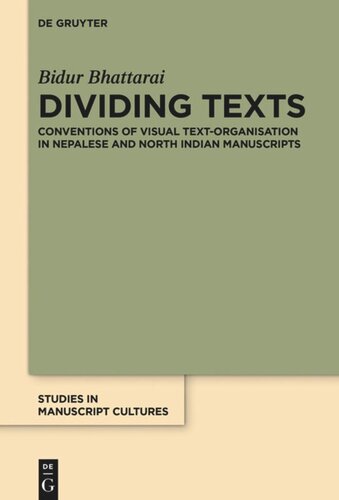

Most ebook files are in PDF format, so you can easily read them using various software such as Foxit Reader or directly on the Google Chrome browser.
Some ebook files are released by publishers in other formats such as .awz, .mobi, .epub, .fb2, etc. You may need to install specific software to read these formats on mobile/PC, such as Calibre.
Please read the tutorial at this link: https://ebookbell.com/faq
We offer FREE conversion to the popular formats you request; however, this may take some time. Therefore, right after payment, please email us, and we will try to provide the service as quickly as possible.
For some exceptional file formats or broken links (if any), please refrain from opening any disputes. Instead, email us first, and we will try to assist within a maximum of 6 hours.
EbookBell Team

4.3
98 reviewsThe number of manuscripts produced in the Indian sub-continent is astounding and is the result of a massive enterprise that was carried out over a vast geographical area and over a vast stretch of time. Focusing mainly on areas of Northern India and Nepal between 800 to 1300 CE and on manuscripts containing Sanskrit texts, the present study investigates a fundamental and so far rarely studied aspect of manuscript production: visual organisation.
Scribes adopted a variety of visual strategies to distinguish one text from another and to differentiate the various sections within a single text (chapters, sub-chapters, etc.). Their repertoire includes the use of space(s) on the folio, the adoption of different writing styles, the inclusion of symbols of various kind, the application of colours (‘rubrication’), or a combination of all these.
This study includes a description of these various strategies and an analysis of their different implementations across the selected geographical areas. It sheds light on how manuscripts were produced, as well as on some aspects of their employment in ritual contexts, in different areas of India and Nepal.